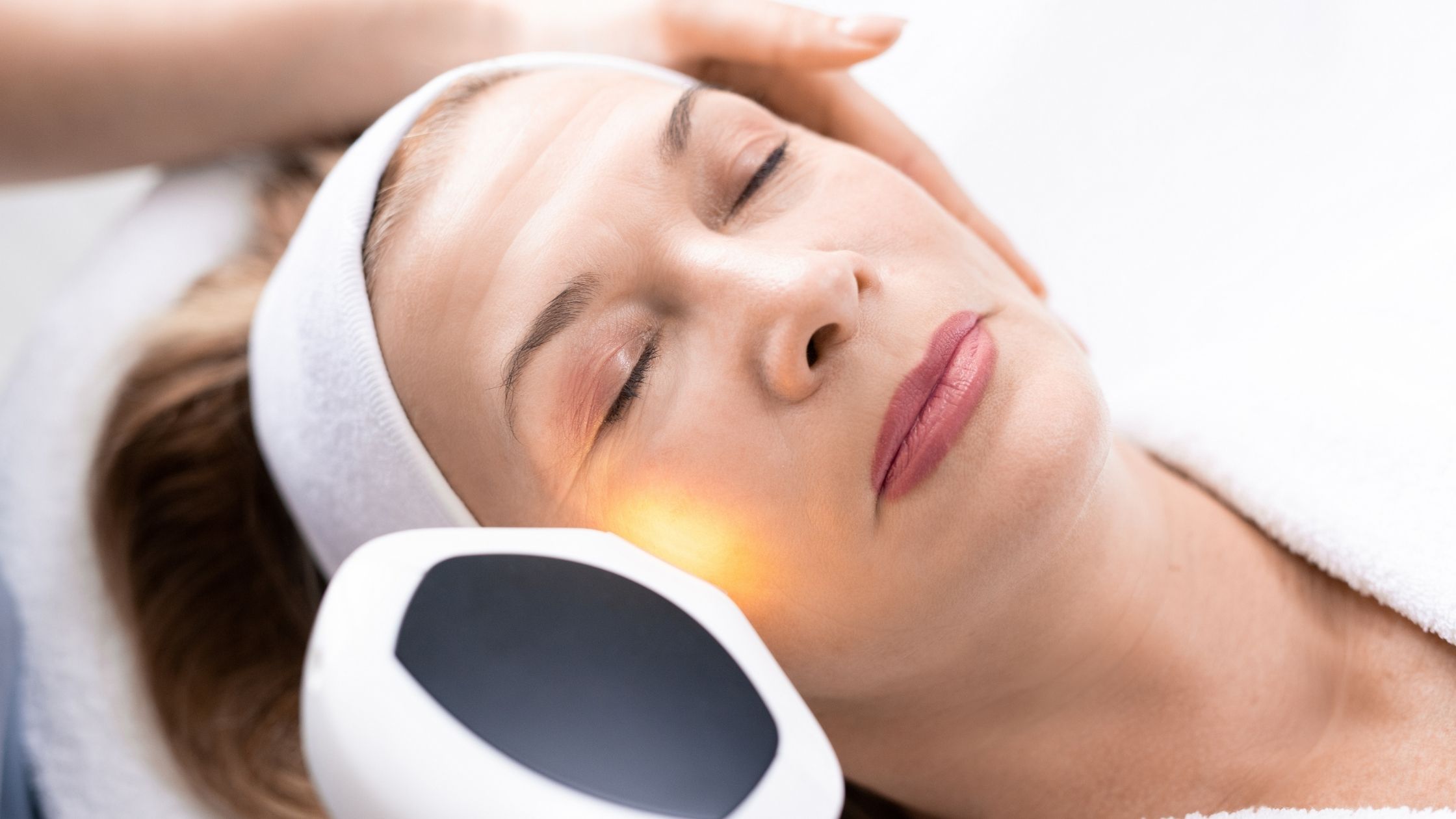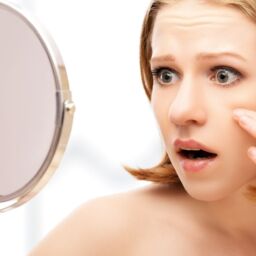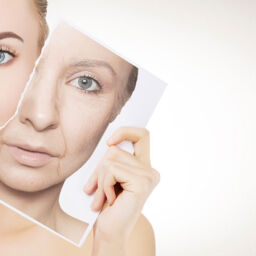There is no magic formula to turn back the clock on aging. As the years roll by, the steady onslaught of time is perhaps most noticeable on your skin. Besides being the largest organ of the body, your skin is also reflective of your internal well-being. In other words, the appearance of your skin is an indicator of how healthy you are and vice versa.
Time may be the most dominant reason for skin aging, but it alone is not responsible for adding years to your face. The skin gradually loses its elasticity and suppleness with advancing age due to several factors, some of which are beyond your control while others can still be avoided. You may not be able to escape skin aging altogether, but you can certainly delay the process and mitigate its effects.
What Causes Forehead Wrinkles?
- Aging: Collagen is the primary structural protein that is responsible for keeping your skin firm and supple. As you grow older, there is a natural decline in your body’s collagen synthesis, causing your skin to lose its elasticity. The age-related decrease in collagen production is perhaps the major contributor to the development of wrinkles and fine lines, which become more prominent and permanent over the years.
- Sun Damage: Exposing your skin to the UV rays of the sun can accelerate skin aging like nothing else. The only good thing about sun-induced skin damage is that it is something you can control, unlike time and genetics. Whether spending a day at the beach or running errands, sun protection is essential. You can protect your skin by seeking shade, covering up with clothing, and using sunscreen that is broad spectrum, SPF 30 (or higher), and water resistant. You should apply sunscreen every day to all skin that is not covered by clothing.
- Smoking: People who smoke are more susceptible to premature skin aging due to the ill effects of nicotine, a major component of tobacco. Nicotine causes your blood vessels to shrink and stifles the blood supply to your skin. As a result, your skin does not receive enough oxygen and nutrients that travel through the blood, and the damage begins to show in the form of premature aging of the skin. Exposure to the other chemicals in cigarette smoke only makes the damage worse by directly hampering the production of collagen and elastin, the two essential building blocks of your skin. Thus, with every puff of cigarette smoke, you are virtually making your skin lose its inherent flexibility and youthfulness.
- Repetitive Facial Expressions. The permanent creasing of the forehead due to repetitive facial expressions is caused by the frequent contraction of the underlying muscles for many years. Wrinkles that develop on the skin due to repeated contractions of the underlying muscles attached to it are known as dynamic wrinkles. When the muscle contracts, the overlying skin bunches together, forming ripple-like lines between the muscle mass. Repeated contraction of the same muscles reinforces this wrinkling and makes the resulting lines more permanent. Forehead wrinkles often result from frowning or squinting too much.
- Low Water Intake: Inadequate water intake can leave your skin parched and lackluster. If your skin does not get the hydration it needs, it will turn dry, tight, dull, and flaky. The drier your skin, the more prone it is to wrinkling.
- Poor Diet: Consuming a healthy, well-balanced diet helps to supply your body with a wide array of skin-friendly nutrients. Your skin, just like any other part of the body, needs a good dose of certain vitamins and minerals to stay healthy. If you do not supplement these nutritional needs through your diet, the deficiency will begin to show on your skin. An undernourished skin is increasingly susceptible to premature signs of aging.
- Unfavorable Sleeping Positions: If you have spent a good part of your life sleeping on your side or your stomach, the repeated compression of your face can give rise to wrinkles on your chin, cheeks, and forehead. These facial creases are referred to as “sleep lines.†As your face remains partially smashed into the pillow for several hours a night, every night, the blood flow to your facial skin gets restricted, resulting in weaker skin that is more prone to wrinkling. For younger people, as their skin is generally more resilient, it can instantly bounce back to its normal state even after being compressed the entire night. Adults, however, have a lower level of collagen and elastic tissue and should consider sleeping on their back as much as possible. If you are in the habit of sleeping on one side more than the other, the sleep lines will be largely limited to that particular side of your face.
- Stress: People who are prone to taking a lot of stress, either as an inevitable result of their hectic lifestyles or a force of habit, tend to age more rapidly. The primary stress hormone, which goes by the name of cortisol, is majorly to blame, as it has been associated with the degeneration of the collagen in your skin, among other things. The higher the stress level, the higher the production of cortisol in the body. Over a period of time, increased levels of cortisol renders your skin cells unable to naturally rebuild the elastin and collagen as well as they used to. Moreover, the premature appearance of wrinkles is largely attributed to the unhealthy lifestyles associated with chronic stress.
Medical Treatment for Forehead Wrinkles
- Botulinum toxin injection (Botox, Dysport, Xeomin) is a cosmetic treatment strategy used to address wrinkles caused by repetitive muscle movement. It keeps these dynamic wrinkles from getting deeper and thereby becoming more pronounced and permanent with repeated contractions of the underlying muscles. It is commonly used for smoothening the wrinkles that appear on the forehead, between the eyes (glabellar region), around the corners of the eyes (crow’s feet), and in the lips.
- Injectable fillers, such as Restylane, Juvederm, and Radiesse, provide a temporary solution to wrinkles. This treatment works on the mechanism of volumizing the face, after which the doctor may recommend skin resurfacing techniques to address the deeper lines that are beyond the scope of injectable fillers.
- Laser skin resurfacing, which also goes by the name of laser vaporization and laser peel, can make your facial wrinkles, scars, and blemishes visibly lighter. As the name suggests, this technique helps bring fresh undamaged layers of skin to the surface. With the advancement in laser technologies, plastic surgeons have now acquired a new level of autonomy in laser surfacing, permitting extreme precision, especially in sensitive areas.
- Chemical peels help accelerate the process of skin regeneration by increasing skin cell turnover. As you shed the worn-out layers of the facial skin at a faster rate, the visible signs of skin aging tend to fade out, at least to a certain degree. Thus, chemical peels not only reduce the appearance of wrinkles and fine lines, but they also help to smoothen the overall texture of the facial skin. People with a minimal degree of wrinkling can opt for over-the-counter chemical peels that are usually mild in intensity and do not pose any real threat. However, it is still better if you run it by your dermatologist first, just to avoid any undue side effects later. Deeper chemical peels, on the other hand, can only be administered by an experienced clinician or doctor as the risk involved is much greater. Deep chemical peels can even result in some degree of scarring or changes in your skin tone. This type of invasive treatment has a more profound effect and warrants a longer recovery period as well as greater precautions such as little to no sun exposure until the skin has healed adequately.
- Dermabrasion involves the use of a small high-speed, rotating metal brush or file to scrape off the damaged epidermal layers. This erosion inadvertently triggers the growth of new skin cells. As fresh layers of the skin surface to the top, your face appears visibly smoothed out. Dermabrasion is typically used for treating acne scarring, substantial wrinkling and leathering from the sun, and uneven pigmentation. A relatively less invasive form of this technique, known as microdermabrasion, is used for addressing mild to moderate photoaging. This involves the use of tiny particles that pass through a vacuum tube to gently erode the aging skin and stimulate skin regeneration.
- Retinoids are synthetic derivatives of vitamin A that have emerged as a popular treatment for photoaged skin. They can reduce skin discoloration, breakdown of elastic tissue, and fine wrinkling by enhancing the natural production of collagen and elastic fibers. Note that retinoids can irritate the skin and cause dryness and photosensitivity – an extreme sensitivity to the sun. They are available by prescription only.



